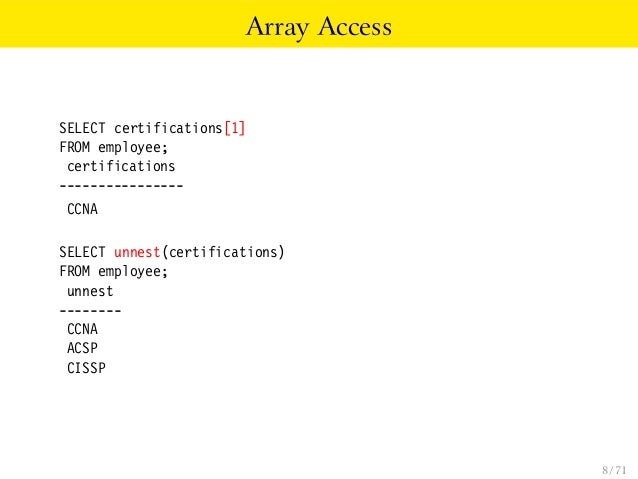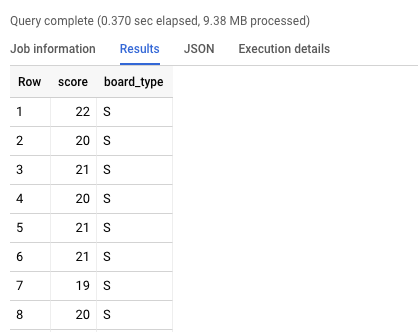Seriously! 38+ Facts About Unnest Postgres Array Your Friends Forgot to Share You.

Unnest Postgres Array | Create table aa (a int primary key. Select first_name, last_name, unnest(phone_numbers) from contacts Postgresql 9.4 introduced with ordinality for generating a sequence number for each element which are produced by unnest(). Postgresql provides the unnest() function that can be used for this. This function is used to expand an array to a set of rows.
Postgresql postgresql unnest() function with example : The subtle difference here is that unnest() calls in the same select list are unnested in parallel if the number of elements is identical. Postgresql provides the unnest() function to expand an array to a list of rows. Postgresql provides the unnest() function that can be used for this. Multidimensional array_agg() and unnest() — first overloads.

Postgres 10 does not allow to use unnest() like that any more. The unnest method seems to be the secret to all of this. So first convert an array to rows using unnest. The subtle difference here is that unnest() calls in the same select list are unnested in parallel if the number of elements is identical. Postgresql provides the unnest() function to expand an array to a list of rows. When we are talking about the string array, internal element. When data is stored in arrays we can make use of some special postgres operators like any and contains to query, filter and aggregate records. While consuming unnest, you must use caution since (like with most computer systems) postgresql would do anything you instruct it to do. If we use what we've got as a subquery, we can use distinct on column genre (mind. How to create an array in postgresql? Distinct comes back into the picture. Create table aa (a int primary key. We can divide them into separate rows.
Postgresql 9.4 introduced with ordinality for generating a sequence number for each element which are produced by unnest(). We can split these into separate rows. This function is used to expand an array to a set of rows. So first convert an array to rows using unnest. Unnest(string_to_array(v.genre_list, ', ')) as genre.

Using unnest() expands an array to multiple rows. Unnest(string_to_array(v.genre_list, ', ')) as genre. Convert arrays into rows using unnest. Create table aa (a int primary key. We can split these into separate rows. Expand an array to a set of rows. This returns a row with null in value for an empty array as well as for a null array, because only an array with elements in it produces. How to create an array in postgresql? How to know if all the elements of the array are null? Postgres 10 does not allow to use unnest() like that any more. With pivoted_array as( select unnest(array1.1,1.2) ) select row_number() over() as element_index, unnest as element_value from pivoted_array. To understand the data type insertion, let's create a 'student' table with the following structure. I saw an interesting postgres question on stackoverflow.
I saw an interesting postgres question on stackoverflow. When data is stored in arrays we can make use of some special postgres operators like any and contains to query, filter and aggregate records. We can divide them into separate rows. Create table aa (a int primary key. Multidimensional array_agg() and unnest() — first overloads.

When data is stored in arrays we can make use of some special postgres operators like any and contains to query, filter and aggregate records. Distinct comes back into the picture. Create table aa (a int primary key. This returns a row with null in value for an empty array as well as for a null array, because only an array with elements in it produces. # select unnest(array'a','b') but it requires rows as input. Convert arrays into rows using unnest. Postgresql unnest function can do many wonders. The unnest method seems to be the secret to all of this. How to create an array in postgresql? Expand an array to a set of rows. When we are talking about the string array, internal element. So first convert an array to rows using unnest. Postgresql provides an unnest () function that you can use to do this.
How to know if all the elements of the array are null? unnest postgres. Create table aa (a int primary key.
Unnest Postgres Array: Using unnest() expands an array to multiple rows.